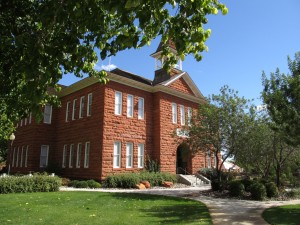If it seems like we’re really trying to drive the point home that every residence or business – schools included – should be tested for radon regularly then great! That’s exactly what we’re trying to do, but only because it is absolutely necessary for the commonwealth.
Elevated radon can be found anywhere, regardless of the structure or location. The only way to know for sure whether or not there is a presence, is to run a test.
Elevated Radon Levels Found at Wilton High
 Recently, elevated radon levels were detected in the athletic director’s office at Wilton High School, in Connecticut. According to Cardno ATC the radon levels in the athletic director’s office measured 7.4 pCi/L – superintendent Gary Richards shared the testing results at a May 8 board of education meeting. For comparison, the US Environmental Protection Agency has set a recommended exposure limit, also called the “action level,” at 4.0 pCi/L. In other words, if levels are found to be above that limit then the affected area should be deemed a hazardous environment and mitigation is absolutely necessary.
Recently, elevated radon levels were detected in the athletic director’s office at Wilton High School, in Connecticut. According to Cardno ATC the radon levels in the athletic director’s office measured 7.4 pCi/L – superintendent Gary Richards shared the testing results at a May 8 board of education meeting. For comparison, the US Environmental Protection Agency has set a recommended exposure limit, also called the “action level,” at 4.0 pCi/L. In other words, if levels are found to be above that limit then the affected area should be deemed a hazardous environment and mitigation is absolutely necessary.
Cardno ATC also released a report on their testing, which further states, “no other results for the radon re-evaluation air samples in Wilton High School were above the EPA recommended action level of 4.0 pCi/L.”
The report also states that Cider Mill and Middlebrook both of which were found to have levels below the recommended limit.
The radon testing was actually conducted from March 5-7 by Neal Freuden of Cardno ATC, a licensed radon measurement provider and qualified Connecticut school testing professional. During testing air samples were collected from 10% of the most occupied rooms in the school that come into contact with the ground. In total, thirteen rooms were tested at Wilton, 13 at Cider Mill and eleven at Middlebrook.
The next step for the school district is to hire a licensed radon mitigation professional to help remove the presence of radon in the affected area of the school.
How is This News Relevant?
It just helps to solidify the fact that all residences should be tested for the presence of radon. It doesn’t matter where you live or what kind of structure you live – or work – in. Radon can seep into any home, school or building. Newer homes often have radon resistance features built-in but that doesn’t make it impossible for the deadly gas to seep inside – it can still happen.
Long-term exposure to radon is what causes the most damage. Furthermore the longer a person spends in a radon polluted environment the higher the chances that they will get cancer. This is one of those problems that you’re better off detecting, and fixing early.
If you haven’t already tested your residence for the presence of radon, do so in the near future.
Via: Wilton Bulletin


